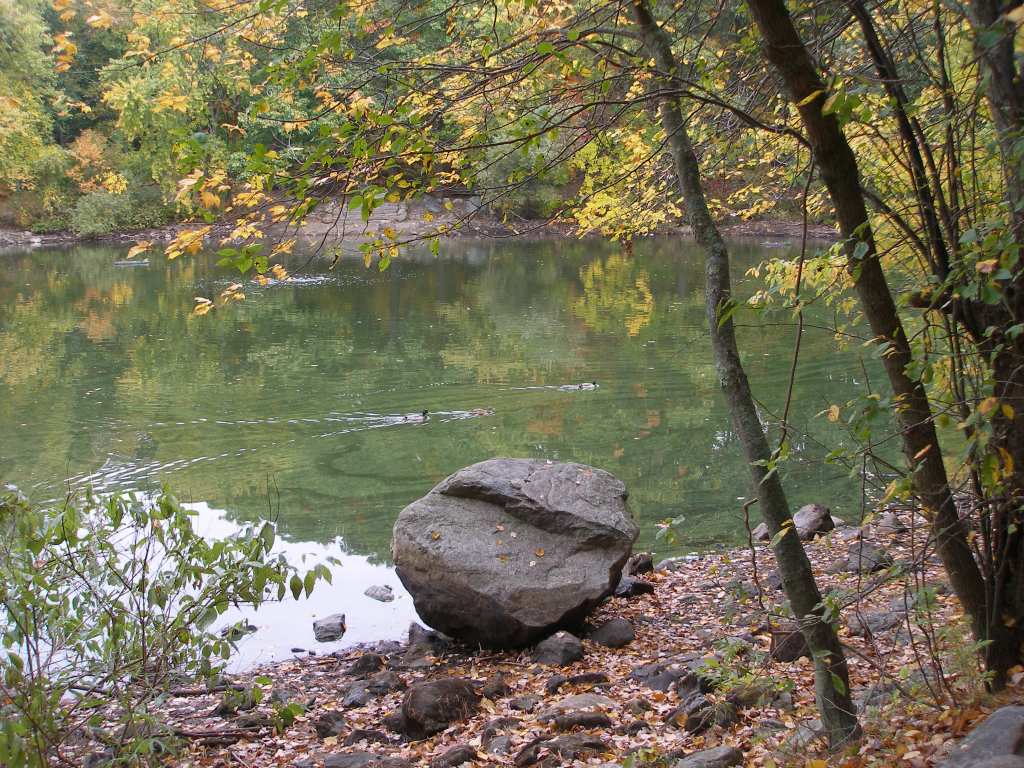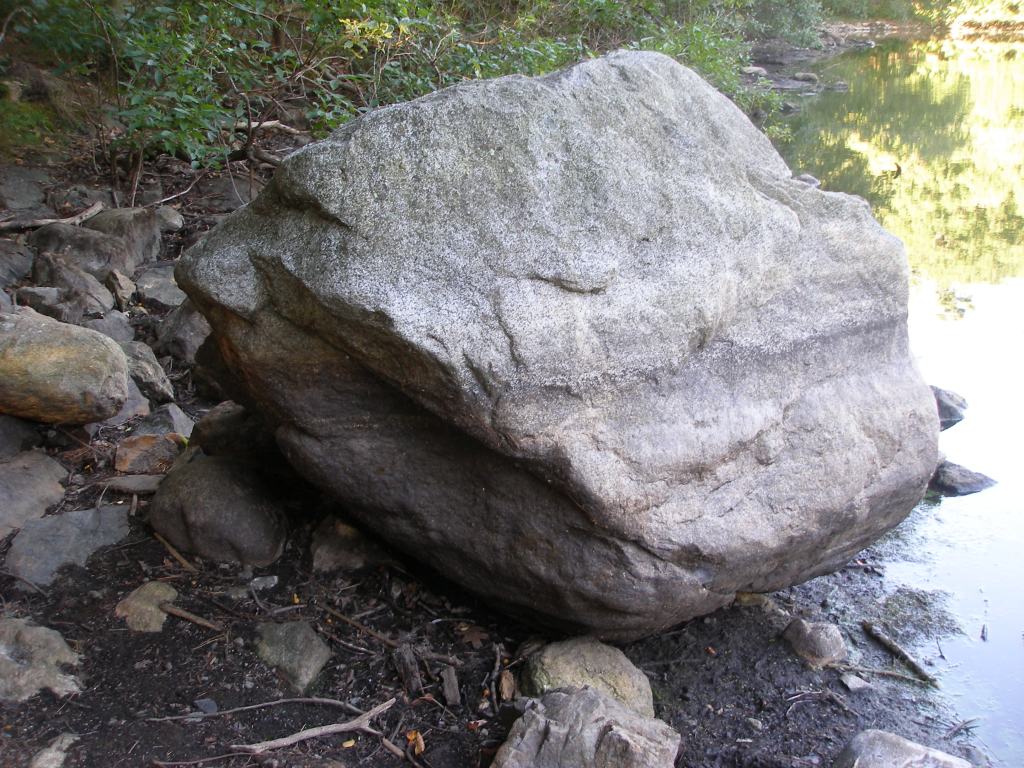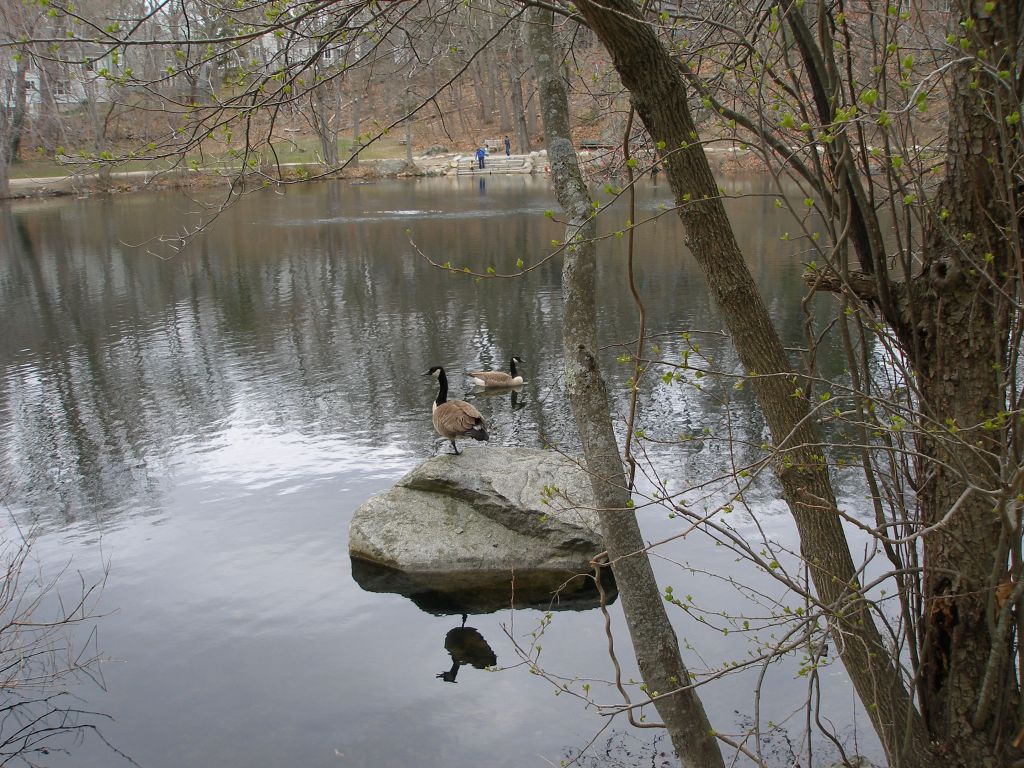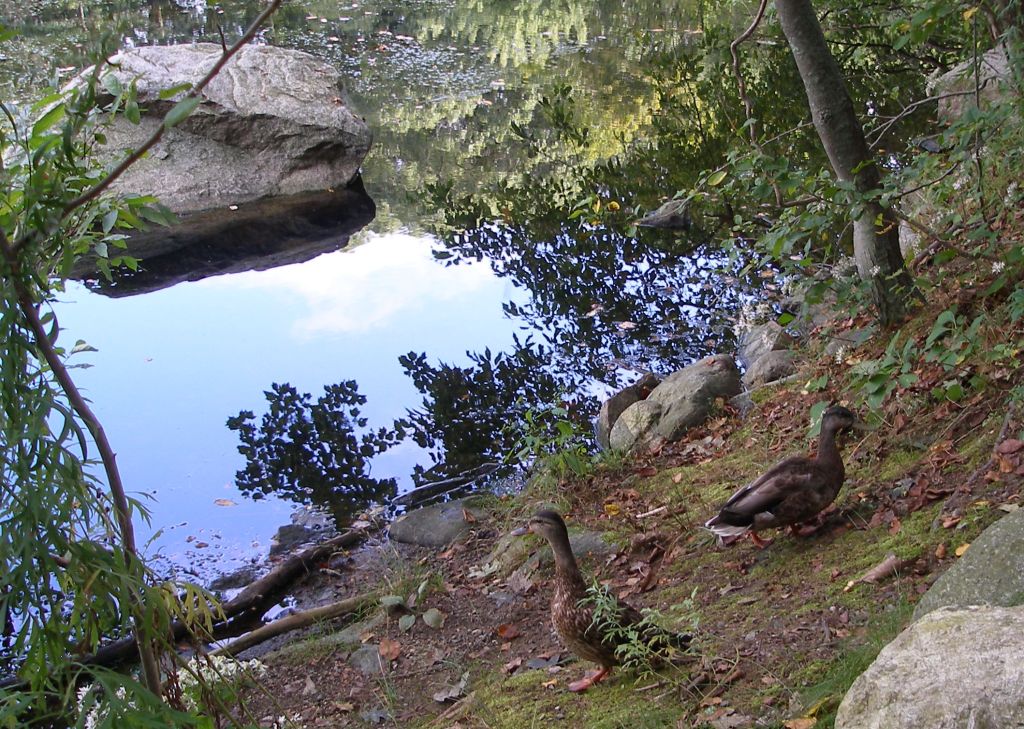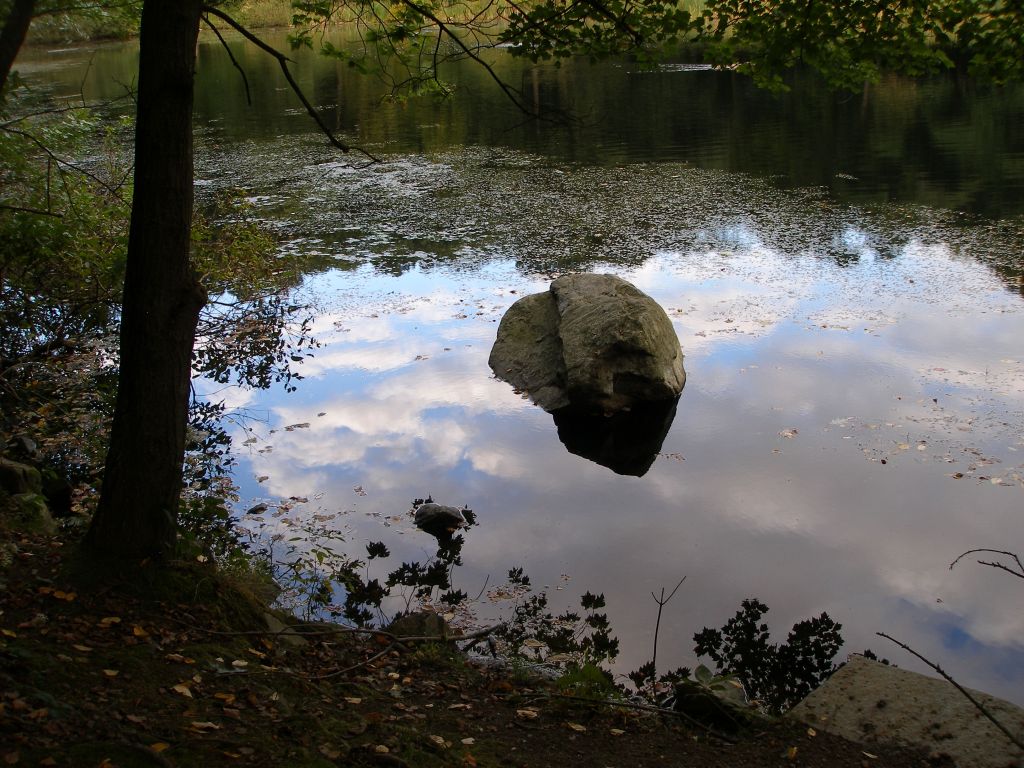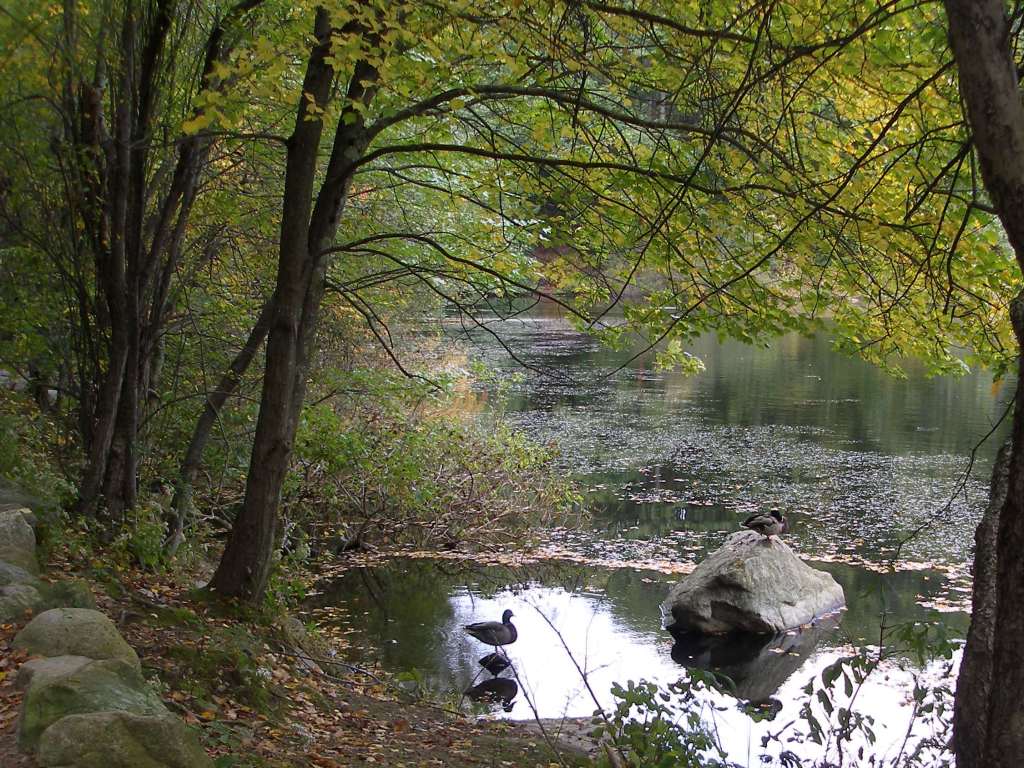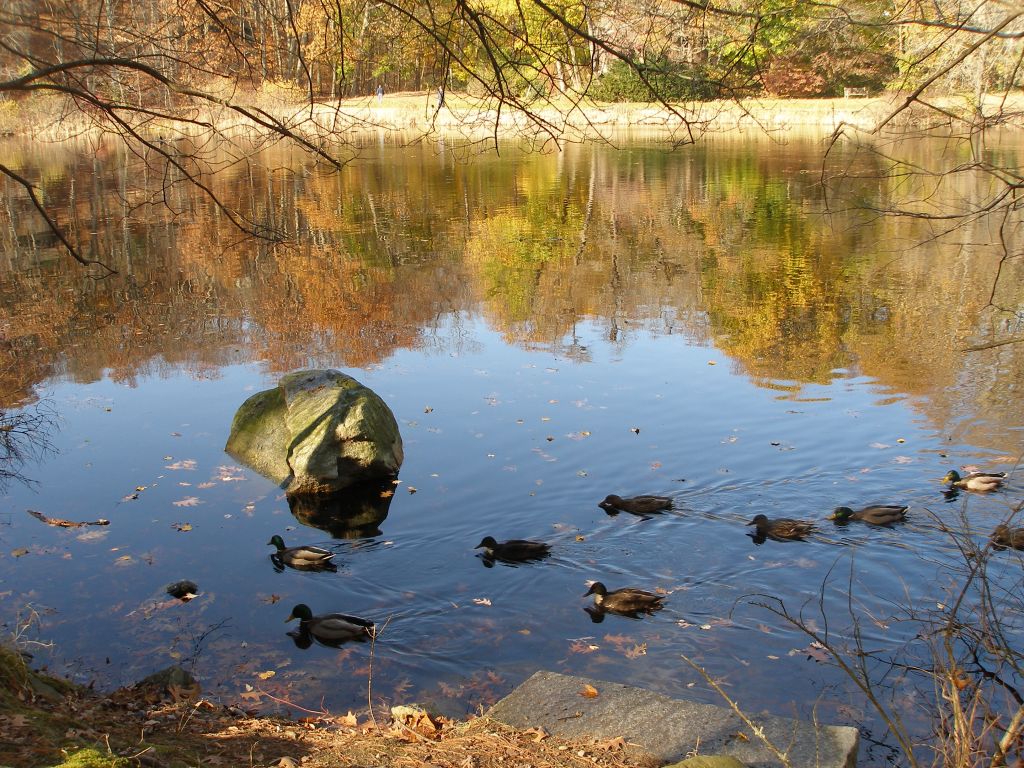A boulder perched at the edge of Hills Pond when I started the photo series. It became an island as the waters rose. Then ice linked it to land again. In spring, geese and ducks perched on its strong back. There were signs of trouble as algal bloom sullied the water and all the birds left.
Waiting unperturbed, the boulder bore silent witness to ducks returning as brilliant colors in shades of yellow, orange and red mixed with the greens. Though all of this, the boulder sat with perfect equanimity. It had me wondering whether I could be more like that. Probably not, but that I could appreciate (and hopefully remember) its still presence seemed to count for something.
